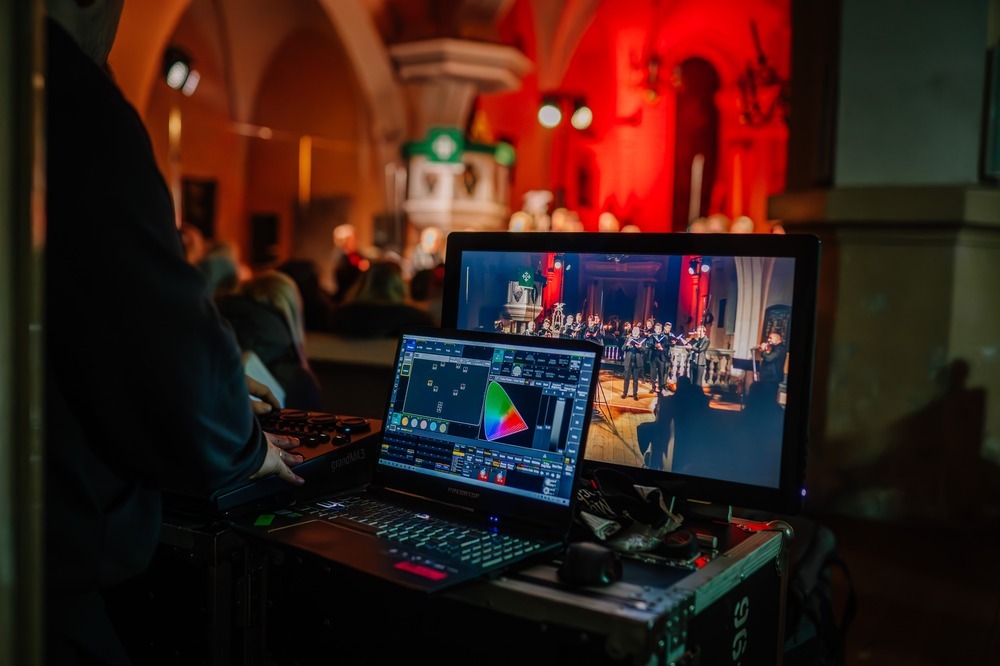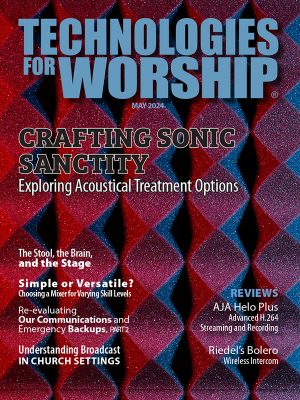
In today’s worship environments, technology plays a pivotal role in enhancing the spiritual experience. Audio, video, and lighting (AVL) systems have become integral to delivering impactful messages and creating immersive atmospheres. Choosing the right equipment requires careful consideration to ensure that the technology serves the worship experience, rather than overshadowing it. From sound clarity to visual engagement, each component should work harmoniously to support the church’s mission.
Audio: The Foundation of Worship Communication
Audio systems are the backbone of any worship service, ensuring that sermons, prayers, and music are heard clearly throughout the space. The first step in selecting audio equipment is understanding the specific needs of the church. A smaller sanctuary with minimal musical elements may require only a simple sound reinforcement system, while larger venues hosting live bands, choirs, and multiple speakers might need a more complex setup.
Microphones are critical for capturing sound effectively. Choosing the right type—whether handheld, lavalier, or headset—depends on the speakers’ and performers’ movements. Wireless options provide flexibility but require careful frequency management to avoid interference. Similarly, loudspeakers should be selected based on the size and acoustics of the room. Line array speakers are ideal for large spaces with high ceilings, while compact speakers work well in smaller venues.
Acoustic treatment of the space is equally important. Materials such as acoustic panels and diffusers can minimize echoes and reverberation, ensuring that the sound is clear and intelligible. Finally, a reliable mixer is essential for balancing audio levels and accommodating various inputs, from microphones to musical instruments. Digital mixers offer advanced features like scene recall and remote control, making them a popular choice for modern churches.
Video: Enhancing Engagement and Reach
Video technology has transformed how churches communicate, both within their walls and to the broader community. In-house video systems, such as projectors or LED screens, enhance engagement by displaying lyrics, scripture, and visual aids during services. The size and resolution of screens should be chosen to ensure visibility from all seating areas. High-definition options are now standard, providing sharp, clear images that draw the congregation’s attention.
For churches engaging in live streaming or recording services, camera selection is crucial. Entry-level options may suffice for smaller churches, while larger congregations might benefit from professional-grade cameras with features like pan-tilt-zoom (PTZ) capabilities. PTZ cameras offer the advantage of remote operation, reducing the need for multiple camera operators.
The video system should integrate seamlessly with the church’s overall technology infrastructure. This includes considering factors like compatibility with existing equipment, ease of use for volunteers, and scalability for future growth. Reliable video switchers are essential for managing multiple inputs, whether switching between cameras or combining live footage with pre-recorded content.
Lighting: Setting the Atmosphere
Lighting is often overlooked but plays a critical role in creating the right atmosphere for worship. Proper lighting not only illuminates the stage but also enhances the mood and focus of the congregation. The choice of lighting equipment depends on the type of worship services. Traditional services might call for static lighting setups, while contemporary services with dynamic music and performances benefit from programmable, color-changing fixtures.
Stage lighting is a key element, ensuring that speakers, musicians, and performers are clearly visible. Fixtures like spotlights and floodlights provide even illumination, while moving lights add versatility for special events. LED lights have become a popular choice due to their energy efficiency, long lifespan, and ability to produce a wide range of colors.
Ambient lighting in the sanctuary should also be considered. Dimmer systems allow for transitions between different parts of the service, such as prayer, music, and sermons. For video purposes, lighting must be carefully balanced to avoid harsh shadows or overexposure, ensuring a professional look for both in-person and streamed audiences.
The Importance of Integration and Usability
While selecting AVL equipment, it is crucial to consider how these systems will work together. Integration ensures that audio, video, and lighting components operate in harmony, minimizing technical issues and maximizing efficiency. Churches should also prioritize usability, choosing systems that are user-friendly for volunteers who may not have professional experience.
Investing in training for AVL operators is equally important. Even the most advanced equipment will not perform to its potential without knowledgeable operators. Many vendors offer training sessions or technical support to help churches get the most out of their systems.
Balancing Quality and Budget
Budget constraints are a common challenge for churches investing in AVL technology. However, it is possible to achieve a balance between quality and cost. Start by prioritizing the most critical components and building the system incrementally. For example, audio should often take precedence, as clear sound is foundational to any worship experience.
Churches should also consider future needs when making decisions. Investing in scalable equipment ensures that the system can grow with the congregation, avoiding the need for costly upgrades down the line. Working with experienced consultants or integrators can help identify cost-effective solutions tailored to the church’s unique requirements.
Creating a Worshipful Experience
Ultimately, the goal of AVL technology is to enhance the worship experience, not to distract from it. Thoughtfully chosen equipment can create a space where congregants feel connected to the message, whether through the clarity of spoken words, the emotional resonance of music, or the immersive power of visuals. By focusing on the church’s mission and the needs of its congregation, leaders can make informed decisions that serve their community for years to come.




